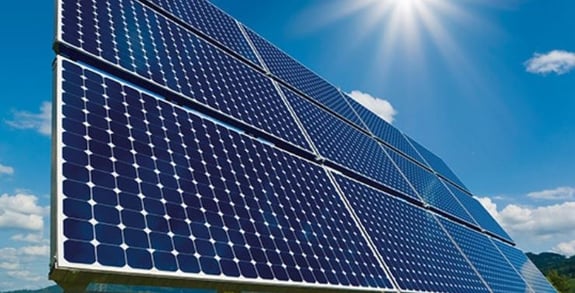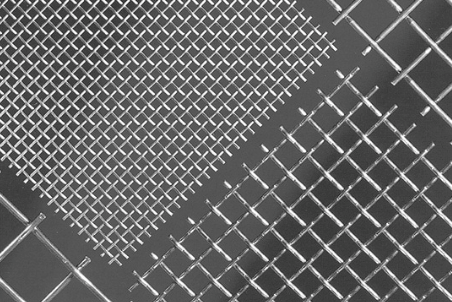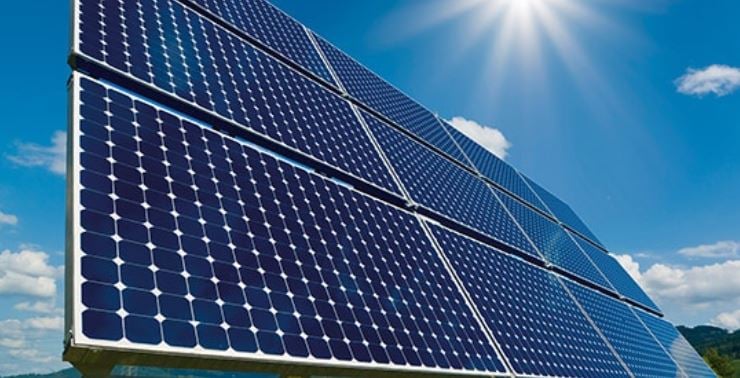Solar Panel Screen Printing: Why Use Woven Wire Mesh?
As we see more eco-friendly initiatives to combat global warming, increased demand for commercial and residential renewable energy has followed suit. Many have started turning to the capabilities of solar energy, as the technology behind it is tried and true.
Solar panel manufacturers have had to fine-tune their process to ensure it is as efficient as possible to keep up with demand. An integral part of the fine-tuning process is selecting a screen media that will provide the best performance.
So, how does woven wire mesh fit into your screen printing process when producing solar panels?
W.S. Tyler has been weaving wire mesh solutions and leverages the years of experience to help you develop confidence in the potential woven wire mesh has to offer.
To provide insight into how woven wire mesh can benefit your solar panel production process, the following article will cover:
- What a solar panel is
- What screen printing is
- What woven wire mesh is
- How screen printing impacts solar panel production
- Why you should consider incorporating woven wire mesh
What Is a Solar Panel?

Solar panels are panelized devices designed to take solar energy from the sun and convert it into electricity. Naturally, the more absorbed into the panel, the more energy.
Thus, solar panels are typically composed of several solar cells that work in conjunction to convert a substantial amount of energy.
What Is Screen Printing?
Screen printing is a process in which ink is passed through a screening media, such as plastic or woven wire mesh, in an effort to transfer a desired pattern or design. To ensure ink passes through and is blocked in the correct areas, an epoxy is used to create a negative stencil of the design.
When manufacturing solar panels, screen printing is typically carried out using the flatbed method. That said, there are four other screen methods that you can use: the stationary cylinder method, the cylinder method, the roll to roll method, and the cylindrical textile method.
Regardless of the method you use, the fundamentals of screen printing remain the same. All methods involve flooding the screening media with ink, filling each open pore with ink.
A squeegee mechanism is then run across the mesh surface, wedging the screen against the surface while also distributing the ink. You are then left with a successfully transferred design.
What Is Woven Wire Mesh?

Woven wire mesh is a series of individual metallic wires interlocked during a stringent weaving process. Specifications such as wire diameter, thickness, mesh count, and dimensions can be customized, which is critical during the production of solar panels.
Value-added services, such as calendaring, can also be applied to enhance the effectiveness of wire mesh when producing solar panels.
How Does Screen Printing Affect Solar Panel Production?
As stated above, solar panels generate electricity from solar energy, more specifically, the photons from sunlight. Each panel is constructed from singular solar cells made of layers of silicon, phorbus, and boron.
As the protons come into contact with the solar cells, elections are projected into the electrical field of the solar panel. The electrons can then be transferred to a power grid that powers things such as entire homes and car charging stations.
To conduct and transfer the electricity created, each solar cell is outfitted with contact points. These are generally a silver paste that is screen printed onto the cells, leaving behind the iconic grid design you have come to expect to see in a solar panel.
Why Use Woven Wire Mesh for Screen Printing?
When manufacturing solar panels, there are several reasons why you should consider woven wire mesh to facilitate your screen printing process. Wire mesh has a relatively higher tensioning capability, heat resistance, precision, and durability than other screening media used during solar panel production.
Examining this further, popular screening media, such as nylon, have an elongation of 5%. Wire mesh has an elongation of less than 1%.
This means that wire mesh can withstand greater tensioning loads. This is particularly critical when finer mesh counts are needed.
Calendaring Your Mesh
When screen printing, the friction between the intersection knuckles of the screen and the squeegee raises concern. This is because this friction raises the potential of inconsistencies in the print.
One of the more beneficial qualities of woven wire mesh as a screen-printing media is its ability to calendared. Calendaring is a value-added service that runs the mesh between two rollers while subjecting it to simultaneous pressure and heat.
This, in turn, flattens the intersection knuckles and reduces the thickness of the mesh. Additionally, the mesh surface becomes smoother, reducing friction as well as the wear and tear your squeegee is subjected to.
Fine-Tune Your Mesh Count To Achieve Reliable Screen Printing
Manufacturers employ wire mesh when screen printing silver-based contact points when producing solar panels. The customization that can be achieved with woven wire mesh ensures your solar panels can effectively and effectively transfer converted energy to a power bank.
Now, regardless of what process screen printing is being applied to, the mesh count of your screen media is of the utmost importance. Selecting the right mesh count allows you to have complete control over the level of silver paste distribution.
For over 140 years, W.S. Tyler has helped customers navigate the world of woven wire mesh, helping them gain confidence in the quality of their products.
To gain insight into what mesh count you should incorporate into your wire mesh screen printing operation, read the following article:
About Ronnie Brown
Ronnie is the Content Writer for W.S. Tyler and has four years of experience as a professional writer. He strives to expand his knowledge on all things particle analysis and woven wire mesh to leverage his exceptional writing and graphic design skills, creating a one-of-a-kind experience for customers.




